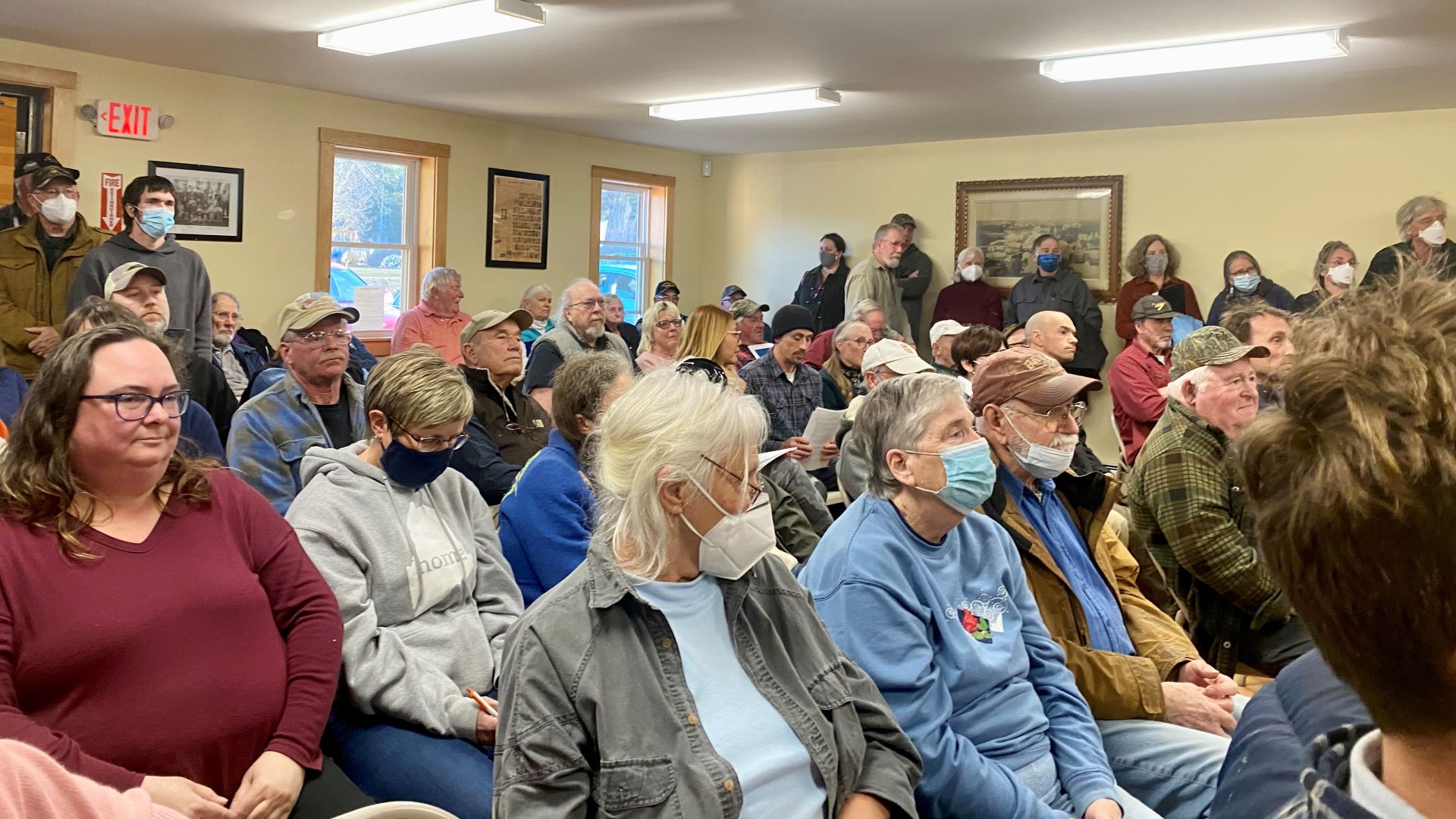Editor’s Note: The following story first appeared May 6 in The Maine Monitor’s free environmental newsletter, Climate Monitor, that is delivered to inboxes for free every Friday morning. Sign up for the free newsletter to get more important environmental news from reporter Kate Cough by registering at this link.
In a response to the plans of Wolfden Resources Corporation to dig for silver, Pembroke residents voted 129-48 on Wednesday evening to adopt an ordinance that retroactively bans digging for metals in the area, according to a 2:30 a.m. email and video from Friends of Cobscook Bay.
It’s the second blow to Ontario-based Wolfden, the first company to attempt to develop a mine in Maine since the state cracked open the door to the prospect in 2017, after decades of a near-total ban.
The company withdrew its application to mine for copper, lead and zinc in Patten after the Maine Land Use Planning Commission said it would deny Wolfden’s petition for a rezoning the company needed before it could apply to the Department of Environmental Protection for a mining permit.
Wolfden began exploratory drilling in Pembroke last fall at a site it dubbed “Big Silver,” roughly two miles north of Pembroke village, where the Pennamaquan River drains into Cobscook Bay. The area, not far from the Canadian border, was the site of limited mining in the late 1800s and has been sporadically searched for minerals since the 1960s.
Maine has an on-again, off-again relationship with metal mining. The state was the site of a short-lived boom from 1879 to 1882, as miners dug for iron, silver, copper, lead and zinc along the coastal volcanic belt from Blue Hill to Lubec. A price drop the next year shut down most of the prospects, and although there was some rooting out of metals, most of the activity ceased in 1918 and didn’t return until the 1960s.
What happened next turned local sentiment against mining for decades: two mines, the open-pit Callahan mine near Brooksville and an underground operation near Blue Hill, resulted in millions of dollars of cleanup costs and extensive environmental destruction. Both mines predate regulatory agencies like the U.S. Environmental Protection Agency and the Maine DEP.
The Callahan mine is a Superfund site that is still being remediated at a cost to taxpayers around $500,000 a year. Costs so far have been at least $45 million, twice the initial $22 million estimate.
Maine has significant mineral deposits, including extensive reserves of manganese in Aroostook county and what is likely the richest hard rock lithium deposit on the planet, recently discovered in Newry. Lithium is widely used in batteries, but many are hoping manganese will boost the electric vehicle market by replacing some of the rarer, costlier materials.
Officials and policymakers are calling on states to tap those resources. “We’re going to need sources of these metals for electric vehicles, solar panels and wind turbines. We’ll have to somehow come to a consensus about where they can be mined or else we’re not going to be able to achieve those goals,” John Slack, scientist emeritus with the USGS Geology, Energy & Minerals Science Center, told me last fall.
In recent decades, most of the environmental consequences that come with mining have been outsourced — often to poor countries with lax environmental regulations — even as the adoption of mineral-intensive commodities like smartphones and electric vehicles has grown in wealthier countries.
The U.S. Geological Survey estimates that each person in the United States requires over 40,630 pounds of minerals annually to maintain our standard of living, including 5 pounds of manganese and 25 pounds of other metals.
“Something has to be okay if we want this kind of future we’re discussing,” said Ian Lange of the Colorado School of Mines. “You can tell me that Penobscot is this sort of unique place on earth and we need to protect it, and Boundary Waters is also a unique place on earth and we need to protect it, and go down the list, but basically that means we should be living in the stone ages. We can’t overturn soil anywhere because everywhere is this unique place on earth.”
Despite setbacks, American Aquafarms appears committed to raising fish in Maine
A Norwegian company that wants to raise salmon in Frenchman Bay closed on the sale of the former Maine Fair Trade Lobster processing plant for $3.46 million, even after suffering several setbacks at state regulatory agencies.

The company’s plans to raise 66 million pounds of salmon annually in pens in Frenchman Bay have come under fire from a number of groups, many of whom raised concerns about water quality and views from Acadia National Park.
Those groups cheered the decisions of the Maine departments of Marine Resources and Environmental Protection when they terminated the American Aquafarms’ lease permit and wastewater discharge license applications last month.
The company hasn’t disclosed its plans but the sale of the plant indicates it isn’t going anywhere anytime soon. “We remain committed to the process and to further the development of sustainable and environmentally friendly aquaculture in Maine,” Vice President Eirik Jørs told The Ellsworth American last month.
To read the full edition of this newsletter, see Climate Monitor: Pembroke bans commercial mining; American Aquafarms still wants to raise fish in Maine.
Kate Cough covers climate change and the environment for The Maine Monitor. Reach her by email with ideas for other stories at gro.r1752397263otino1752397263menia1752397263meht@1752397263etak1752397263.








